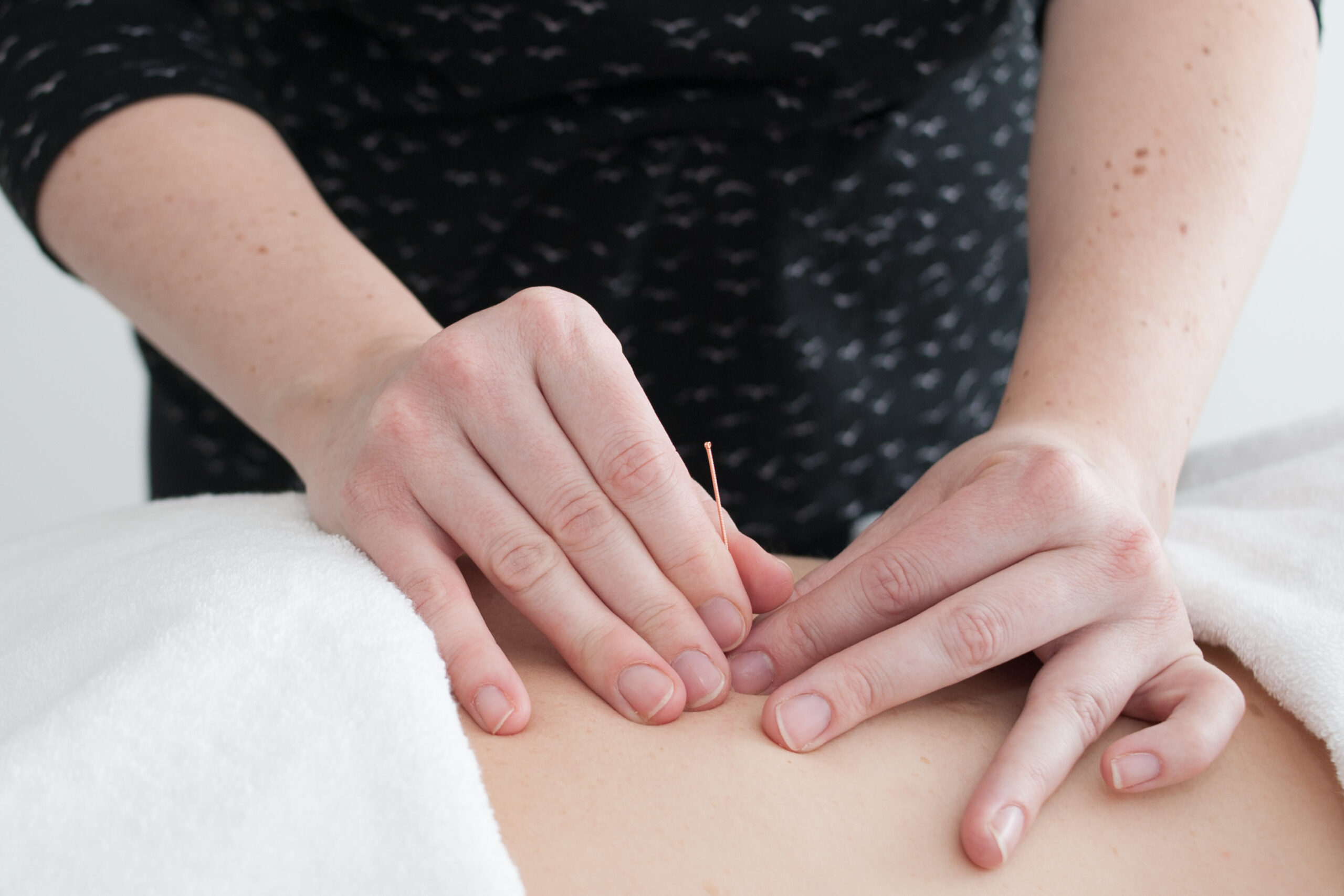What is The Difference Between Acupuncture, Neurofunctional Acupuncture and Dry Needling?
We love to answer this question and get it a lot. These are all different styles of needling we offer here at Elora Physiotherapy and we can appreciate it can be confusing knowing the difference between them.
Acupuncture involves inserting very fine needles into specific spots in the body to produce a therapeutic effect. It works by stimulating a release of chemicals and hormones in the brain, spinal cord and muscles. This brings the nervous system to a balanced state that improves pain, muscle activation and circulation. It is a natural way to influence the body’s internal regulating system, help promote physical and emotional well-being and stimulate the body’s natural ability to heal.
It is a gentle technique and there is little to no discomfort when the needles are inserted. Most clients report they find it really relaxing and often have a little rest! We love to see this, as you will get optional effects from your acupuncture treatment when the mind and body are fully relaxed.
Contemporary Medical Acupuncture/Electroacupuncture/Neurofunctional Acupuncture — What Is It?
One type of acupuncture we offer at Elora Physiotherapy is neurofunctional acupuncture. This acupuncture training is completed at McMaster University as part of their Contemporary Medical Acupuncture Program. It is a University-based continuing education program designed for qualified health professionals.
Contemporary Medical Acupuncture is synonymous with neurofunctional acupuncture and electroacupuncture. It is a physiological intervention that elicits existing available regulatory mechanisms in the body through the up-regulation and down-regulation of specific cellular processes.
This is a precise peripheral nerve stimulation technique, in which acupuncture needles are inserted into anatomically defined neurofunctional sites, and stimulated with electricity. This is done for the therapeutic purpose of modulating abnormal activity of the nervous system and/or the endocrine, exocrine and immune systems, in pain syndromes, functional problems, and any diseases in which these modulatory mechanisms are available. Neuromodulation occurs through neurological and neurohumoral mechanisms at multiple levels, namely: peripheral nerves, spinal cord, brain stem, brain and cerebellum.
By stimulating the nervous system in this way to release chemicals in the brain, spinal cord and muscles, these chemicals will change the experience of pain — or they will trigger the release of other chemicals and hormones which influence the body’s own internal regulating system. The improved energy and biochemical balance produced by neurofunctional acupuncture results in stimulating the body’s natural ability to heal.
Contemporary Medical Acupuncture is mechanism-based, not disease-based. Therapeutic goals and treatment targets are selected based on the identified neurological dysfunctions contributing to the clinical presentation of the symptoms.(1)
What is Dry Needling?
Dry needling refers to the insertion of thin monofilament needles, as used in the practice of acupuncture.(2) This is in contrast to wet needling which uses hollow-bore needles to deliver things such as corticosteroids, anesthetics, botulinum toxins, or other agents.(2)
Historically, dry needling has been aimed at myofascial trigger points which are hyperirritable spots located in the taut band of the skeletal muscle and can be palpable as a nodule.(3) Dry needling can also be used to treat ligaments, tendons, subcutaneous fascia, scar tissue, peripheral nerves, and neurovascular bundles for the management of a variety of neuromusculoskeletal pain syndromes.(4)
What Style is Right For Me?
We utilize needling when indicated and depending on your comfort level. Depending on what your condition/diagnosis is and what your goals are we can answer this question specifically for you. Please be in touch as we would be happy to discuss the best treatment options for you.
We love helping you find your best mobility and function, and needling is definitely one of the tools that can help.
References
- This information has been provided from the McMaster Contemporary Medical Acupuncture Program and the Canadian Contemporary Acupuncture Association. More information can be found at http://mcmasteracupuncture.com and http://www.contemporaryacupuncture.ca
- Dunning J, Butts R, Mourad F, Young I, Flannagan S, Perreault T. Dry needling: a literature review with implications for clinical practice guidelines. Phys Ther Rev. 2014 Aug;19(4):252-265. doi: 10.1179/108331913X13844245102034. PMID: 25143704; PMCID: PMC4117383.
- Dommerholt J, Mayoral del Moral O, Gröbli C. Trigger point dry needling. Journal of Manual & Manipulative Therapy. 2006 Oct 1;14(4):70E-87E.
- Casanueva B, Rivas P, Rodero B, Quintial C, Llorca J, Gonzalez-Gay MA. Short-term improvement following dry needle stimulation of tender points in fibromyalgia. Rheumatol Int. 2013 Apr 23; [epub ahead of print] [PubMed]

